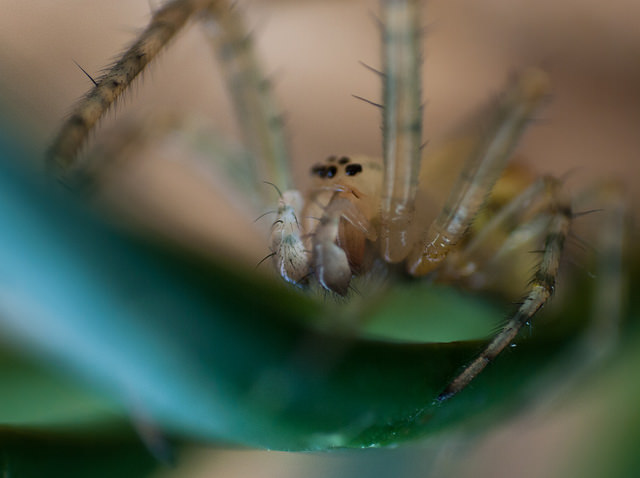For Visual Exercise 1, I have been asked to produce five images which make creative use of lens aperture, shutter speed and ISO settings.
Depth of Field
A shallow depth of field is created by using a low aperture, such as f/2, where only some of the image appears in focus. Inversely, a higher aperture such as f/22 will produce a result where more of the scene is focus.
Some examples and explanations of depth of field can be found here:
I often use a shallow depth of field when photographing fungi, here are some examples:
I also used a shallow depth of field when capturing this spider on a yew needle with a reverse lens:

Shutter Speed
A faster shutter speed is required to capture moving subjects, perhaps upwards of 1/250th of a second. A slower shutter speed can be used to create blurred images where the subject is moving.
I found some examples here:
Slow shutter speeds (long exposure) can produce great results to capture movement, particularly with water or fire. I used a slow shutter speed to create this image:

In class we were introduced to images by Japanese photographer, Hiroshi Sugimoto who creates long exposure seascapes and also images of theatres which are exposed for hundreds of minutes. We were also shown a photograph by Alec Soth which used a slow shutter speed to show the movement of people climbing up a mountain path.
ISO
ISO (International Standards Organisation) is a standardised measurement of how sensitive a camera sensor (or film) is to light. An ISO of 100 or 200 is commonly used in situations where there is a lot of available light. In lower light conditions, higher ISOs are used to compensate for the lack of light.




